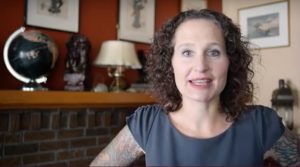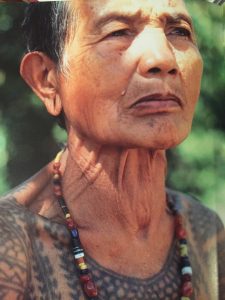Ink studies the focus of new worldwide online tattoo foundation
By Jean Lotus Staff Reporter — September 12, 2016
Anna Felicity Friedman, Founder of Center for Tattoo History and Culture. (Photo courtesy of the Center for Tattoo History and Culture)
Tattoo scholars from Europe, the U.K., the U.S. and New Zealand are joining together to create an international virtual tattoo library and research center based in Cook County.
“It will be an online hub for tattoo education and outreach,” said Anna Felicity Friedman, a University of Chicago Ph.D. and author of the World Atlas of Tattoo, published by Yale University Press.
It turns out, the contemporary age of Instagram is a perfect way to celebrate an ancient practice that extends back in time 5,000 years. The Internet is perfect for documenting and sharing a deeply personal form of artwork that constantly moves about and is often hidden away under clothing.
Friedman says those who study the ancient process of inking the skin have a hard time breaking into serious academia. No study of popular culture gets respect in the Ivory tower, she said, but tattooing is so much more than popular culture: It’s an art form, a study of ethno-cultural practices, and a study of personal pictorial biography.
Can the study of tattoos be respectable? And would it want to be?
The Field Museum in Chicago will host a special exhibit, “Tattoo” Oct. 21 – April 17, 2017. The travelling exhibit started in Paris at the musée du quai Branly — Jacques Chirac and is currently at the Royal Ontario Museum in Toronto.

: A Japanese-influenced design by London tattoo practitioner Claudia De Sabe. (Photo courtesy of The World Atlas of Tattoo)
The exhibit will feature 170 objects that tell the story of tattooing, including historical artifacts and “intricate contemporary designs tattooed onto silicone models of the human body,” according to the Field website. An anonymous donor is paying to stage the exhibition.
Why do people get tattoos? Friedman said there are many reasons, but some are: Memorializing someone or something, as a rite of passage, as a way to identify with a group.
“I always tell people only get tattoos that connect to personal history and you can’t regret it,” she said.
Egyptian mummies have been found with tattoos. Almost 60 tattoos were found on the skin of “Ötzi” partially mummified man from 3330 B.C. found in the Swiss Alps. Those were likely medicinal, Friedman said.
Friedman says the world needs a central online source for tattoo history because there is so much misinformation around tattoos.
For example, many people falsely believe Europeans were introduced to tattoos when English ships visited the Far East with Captain James Cook. The truth is, tattoos were popular in Europe in the middle ages. Visiting the Middle East recently, Friedman acquired a tattoo of a crusader’s cross with a design from the early 1600s.
Tattoos sometimes become a cultural phenomenon. During and after World War II in Hawaii, tens-of-thousands of servicemen visiting the islands for rest and relaxation were inked with “flash” designs created by Norman Keith Collins (“Sailor Jerry”) and his protégé Ed Hardy. Those designs spread throughout the U.S., and the world, on the forearms of America’s grandfathers.
Friedman’s first tattoo was a “rite of passage” dragon on her shoulder, in a New Hampshire tattoo parlor, she said. Some designs she has outgrown, she said.

Whang-Od , 94, is the last practicing Kalinga tribal tattoo master of the Philippines. (Photo courtesy of The World Atlas of Tattoo)
“I have an image of a skull on my leg with lizards crawling over it. Is it something I would get now? No. But it reminds me of my 19-year-old punk rock self and that makes me happy.”
Friedman wants people from all over the world to share out-of-copyright images on the site in the image database. The foundation has stated an Indiegogo campaign to raise $30,000 to get the project off the ground.
Friedman says the foundation’s work will be for academics and fans alike.
“We’re in an amazing period of time,” said Matt Lodder, an art history professor at the University of Essex in England. “A group of academics who are wearing their research on their sleeves — or in my case on my neck — are able to combine scholarly rigor, primary sources with a passion and love and understanding of what tattooing is,” he said.
Read the current issue of the Cook County Chronicle
Free digital subscription to the Cook County Chronicle
— Ink studies the focus of new worldwide online tattoo foundation —



